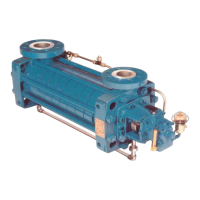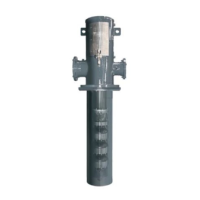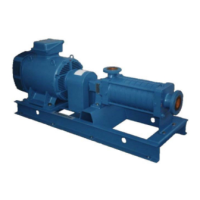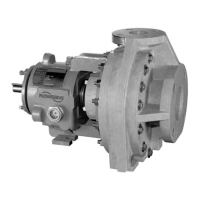When reassembling pump, all fasteners must be
tightened to the proper torque values. Refer to
Ball bearings require proper handling and installation
to ensure optimum performance. The following
information is intended as a minimum to ensure that
the bearings are handled and installed properly.
package except to inspect the bearings, when
stored for a long period of time or just prior to
other contaminates will enter the bearings.
Handle bearings with clean, dry hands and with
clean, lint free rags. Lay bearing on clean paper
and keep covered. Never expose bearings on a
and the preservative should not be removed.
are clean and free of nicks and burrs. Check the
dimensions of these areas to ensure correct fit of
Under no circumstances are the bearings to
be left exposed; they should be protected by
source for expanding the inner race of the
bearings to facilitate mounting. Bearings still
wrapped in their original intimate wrap are placed
on a shelf in a temperature-controlled oven. A
sleeve, make sure bearing is installed squarely
and is firmly seated. Hold bearing in place until it
has cooled sufficiently so that it will not move
from position. Cover bearings to protect them
When installing the bearings the mounting
pressure should never be applied in such a manner
that it is transmitted through the balls. Apply the
mounting force directly against, and only against, the
and shaft, the bearing housing bores and bearing
outside diameter should be coated with the
grease or lubricating oil to facilitate assembly.
Impellers ring setscrews can be either axial or radial
Typical radial screw installation for impeller rings.
Typical axial screw installation for impeller rings.
Make sure ring fit on impeller is free of nicks and
burrs. Install the set-screws in the tapered holes on
the ring fits. Radial set screw shall be installed in
such a way that the socket end is accessible from the
inside of the impeller and the point end is just slightly
below the ring fit land. It may be easier to install the
radial set screw from the outside of the impeller.

